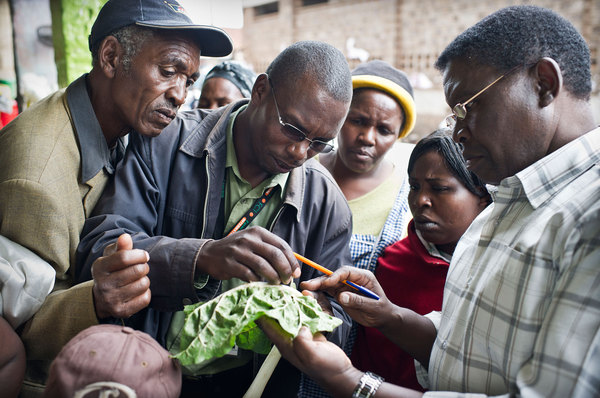Local innovation as source of adaptation and resilience to climate change
This is the second guest post as part of our Climate Smart Agriculture Week (20 – 24 November 2017) Climate change poses major challenges to small-scale African farmers, whose own locally developed strategies to address these challenges provide entry points to sustainable processes of adapting to climate change. Partners in Prolinnova – a global network…
Blame animals only when you aren’t smart
This is the first guest post as part of our Climate Smart Agriculture Week (20 – 24 November 2017) Despite us humans being the most intelligent among all living organisms it seems we have lowered ourselves to blaming the animals we farm for major environmental concerns, including; climate change, water depletion and pollution, land degradation…
The disease that could change how we drink coffee
Reblogged from BBC Future Written by Jose Luis Penarredonda If you landed in Bogota in the 1960s, one of the first things you would have probably seen outside the airport was a giant billboard. In a slightly menacing tone, it said: “Coffee rust is the enemy. Don’t bring plant materials from abroad”. It was one…
Gobernación de Santa Cruz lanza piloto de Clínicas de Planta Electrónicas
La Gobernación de Santa Cruz por medio de su ‘Servicio Departamental Agropecuario y Sanidad e Inocuidad Agropecuaria’ (SEDACRUZ) y de DSIA, conjuntamente con el Centro de Investigación Agrícola Tropical (CIAT-Bolivia) implementan clínicas de plantas en el departamento de Santa Cruz, Bolivia, desde el 2012. El grupo coordina acciones de entrega de servicios de diagnóstico y…
UFSCar Participa dos Modulos de treinamento de Plantwise
O novo campus da Universidade Federal de São Carlos, localizado no sudoeste paulista, estabeleceu desde 2016 uma parceria com CABI Plantwise para integrar a rede nacional de entidades executoras das clínicas de plantas no Brasil. As clínicas de plantas são uma metodologia para oferecer serviços de diagnóstico e recomendação de problemas fitossanitários com enfoque no…
Una clínica agropecuaria para lograr ‘el oro en la vida’
La clínica de plantas del pueblo Chamis del departamento de Cajamarca representa algo raro en Perú: un servicio de asesoría para agricultores con presencia permanente en el pueblo. Según el censo agropecuario del 2012, sólo un 7.3% de los agricultores del país reciben asistencia técnica y en Cajamarca es menos todavía, con un 4.6%. Frente…
A plant and livestock clinic to win the ‘gold medal of life’
The plant clinic in town of Chamis in the department of Cajamarca represents something unusual in Peru: a farmer advisory service with a permanent presence. According to the agricultural and livestock census of 2012, only 7.3% of the country’s farmers receive technical assistance and in Cajamarca it is even less, just 4.6%. Faced with this…
Haciendo llegar los servicios donde no alcanzan
En medio de un entorno altamente desafiante, la EEA Baños del Inca de INIA (Instituto Nacional de Innovación Agragia) en Cajamarca ofrece un servicio de asesoría para los pequeños agricultores. Desde el 2013, cuando se estableció el convenio Plantwise-INIA, los doctores de plantas Ing. Fernando Escobal Valencia e Ing. Marieta Cervantes Peralta operan dos clínicas…
Delivering services to places that are hard to reach
In the midst of its highly challenging surroundings, the INIA (National Institute of Agricultural Innovation) Experimental Station of Baños del Inca in Cajamarca offers an advisory service for smallholder farmers. Since 2013, when an agreement was signed between Plantwise and INIA, plant doctors Eng. Fernando Escobal Valencia and Eng. Marieta Cervantes Peralta operate plant clinics,…
Sembrando las semillas de la sostenibilidad en Achuapa, Nicaragua
La Cooperativa Juan Francisco Paz Silva (JFPS), fundada en 1990, comenzó la operación de un puesto para plantas en 2009. La cooperativa estaba buscando una manera de ofrecer asistencia técnica a sus productores asociados y los puestos de plantas proporcionan una manera para hacerlo. Inicialmente, dos técnicos, Oscar Calderón y Harold Espinoza, fueron capacitados como…

